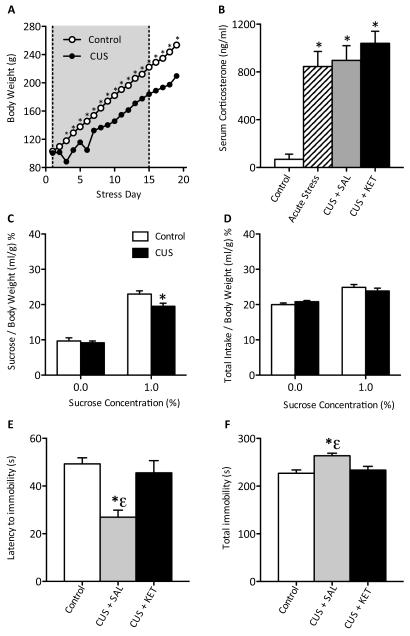Figure 2.
Effects of chronic unpredictable stress (CUS) and ketamine's (20 mg/kg) antidepressant efficacy in adolescent rats (n=8–12/group). (A) Exposure to CUS reduced weight gain across days. (B) Levels of circulating serum corticosterone (CORT) were assessed in control (i.e., no stress) and CUS-exposed adolescent rats 72 hours after receiving saline or ketamine (20 mg/kg), and in controls exposed to stress for 5 minutes immediately before blood collection. Serum CORT levels were significantly elevated by acute as well as CUS exposure, and were not affected by ketamine treatment (p<0.05). (C) Exposure to CUS significantly reduced adolescent rats' preference for sucrose (p<0.05). (D) No changes in total liquid intake were observed. (E) CUS significantly reduced rats' latency to become immobile (p<0.05), whereas a single ketamine injection (20 mg/kg) reversed the CUS-induced deficit back to control levels (p>0.05). (F) Exposure to CUS significantly increased total immobility (p<0.05) while a single ketamine injection (20 mg/kg) reduced total immobility back to control levels (p>0.05). Data are presented as latencies to become immobile and total immobility (in seconds; mean ± SEM). CUS + SAL, chronic unpredictable stress and saline; CUS + KET, chronic unpredictable stress and ketamine. *Significantly different from saline-treated controls (p<0.05). εSignificantly different from CUS + ketamine-treated group (p<0.05).

